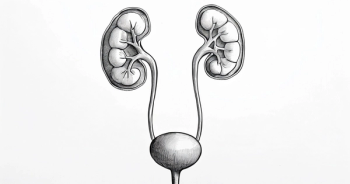
Targeted Therapies in Oncology
- December 1
- Volume 8
- Issue 17
Dynamic Tumor Cell Profiling Technique Moves Therapy Beyond Genomics
A technique involving BH3 profiling is emerging as a promising drug discovery tool for assessing whether a tumor is primed for cell death and would respond to anticancer therapy, according to a presentation at the 2019 Association for Molecular Pathology Annual Meeting and Expo.
A technique involving BH3 profiling is emerging as a promising drug discovery tool for assessing whether a tumor is primed for cell death and would respond to anticancer therapy, according to a presentation at the 2019 Association for Molecular Pathology Annual Meeting and Expo.1
Dynamic BH3 profiling, as the technique is called, is an example of an evolving approach to precision medicine in which investigators examine the “functional phenotype” of a tumor rather than relying on genomic analysis, said Anthony G. Letai, MD, PhD, whose laboratory at the Dana-Farber Cancer Institute has pioneered the concept.
During the development of venetoclax (Venclexta), Letai and colleagues profiled interactions of BH3-only proteins, which are members of the bcl-2 family, as a predictive marker of response to the drug.2In 2016, venetoclax became the first FDA-approved bcl-2 inhibitor; it is now indicated for use in chronic lymphocytic leukemia (CLL) / small lymphocytic lymphoma and acute myeloid leukemia (AML) settings.3
Regulating Apoptosis
The rationale for focusing on BH3 stems from the role of bcl-2 proteins in the complex interactions that modulate apoptotic signaling. Apoptosis is regulated at the mitochondrial level and involves interactions among the more than 15 bcl-2 proteins that can be either proapoptotic or antiapoptotic.1,4
Mitochondrial apoptotic priming is the primary reason that chemotherapy works and can “assign BH3 mimetics where they belong” to promote an anticancer response, Letai, associate professor of medicine at Harvard Medical School in Boston, Massachusetts, said in his presentation. As a result, he said, increases in priming due to therapy can be used to identify targeted therapies that are more likely to be effective.
“BH3 profiling is exposing mitochondria to a panel of BH3 peptides and measuring quantitating—mitochondria permeabilization. That gives us a measure of how primed the mitochondria are for apoptosis,” Letai said in an interview with Targeted Therapies in Oncology. “In dynamic BH3 profiling, we do that process but we precede it with a drug exposure. Then what we can say is, ‘Did the drug exposure increase the apoptotic priming?’ We get drug-specific information about that cell.
“If we have a cell where we expose it to a drug and we find that its apoptotic priming goes up as measured by dynamic BH3 profiling compared with an untreated [cell], then that means that drug initiated apoptotic signaling in that tumor sample,” he added.
BH3 Profiling
In 2007, Letai and colleagues used BH3 profiling to predict sensitivity to a bcl-2 antagonist then under investigation for CLL.5The hypothesis that AML cells also are bcl-2 dependent initially was met with skepticism, but preclinical studies showed that there is a built-in therapeutic index for bcl-2 inhibition in AML, Letai said.
Letai emphasized that BH3 profiling has helped identify a targeted therapy for these malignancies, whereas genomic profiling has not turned up actionable mutations in either cancer type. Because of this, he believes that new dimensions are needed in precision medicine.
“The paradigm for precision medicine in oncology is pretty much universally genetics,” he said. “We need to move beyond omics and static approaches.”
Further work by Letai and his team shows that dynamic BH3 profiling can also be effective in solid tumor samples.6Investigators used solid tumor cell lines for breast cancer, nonsmall cell lung cancer, melanoma, and colon cancer to test their hypothesis. They exposed cancer cells to different kinase inhibitors and performed dynamic BH3 profiling. The percentage of cells with an increase in priming was significantly higher for treated cells versus untreated cells at 16 hours of exposure, as was cell death at 96 hours, which investigators said was indicative of the predictive value of dynamic BH3 profiling (area under the curve, 0.96; 95% CI, 0.91-1.02;P<.0001).
Letai’s laboratory is developing technology to test multiple drugs on 1 sample, he said. The process involves fresh isolation of primary or patient-derived xenograft tumor cells followed by incubating the cells with different drugs for 24 hours, conducting BH3 profiling with a synthetic peptide, performing high-throughput imaging, quantifying drug-induced priming changes, and identifying the drugs that caused the greatest priming changes.
“We can now test thousands of drugs on the same sample as long as we have enough cells to distribute to the different wells,” Letai said. “We’re now at a phase where we can do primary discovery directly on patient primary tissues in addition to smaller clinical diagnostic studies.”
Functional Assays
Letai said that many investigators are working throughout the world on various dynamic assays. He is president of the Society for Functional Precision Medicine, which seeks to advance the development of such tools. In order to move forward, the field will need the involvement of pathologists, Letai emphasized.
“A demand that these types of functional assays make is that we have living, viable tissue,” Letai said, which contrasts with current omics testing practices.
“The first thing we do when we get tissue out of a patient is we kill it with formalin,” Letai said. “We have to think twice before we immediately kill the samples that are coming out of patients because as soon as we kill these samples, the ability to gain functional information is lost. This functional information can be incredibly valuable in actually choosing the drugs that are going to work in [patients with] cancer.”
References:
- Letai A. Choosing patient therapy with dynamic BH3 profiling. Presented at: 2019 Association for Molecular Pathology Annual Meeting; November 7-9, 2019; Baltimore, MD.
- Pan R, Hogdal LJ, Benito JM, et al. Selective BCL-2 inhibitor by ABT- 199 causes on-target cell death in acute myeloid leukemia. Cancer Discov. 2013;4(3):362-375. doi: 10.1158/2159-8290.CD-13-0609.
- Venclexta [package insert]. North Chicago, IL: AbbVie Inc; 2019. bit. ly/32zwkyb. Accessed November 7, 2019.
- BH3 profiling introduction. The Letai Lab. Dana-Farber Cancer Institute website. bit.ly/2Q5sw59. Accessed November 7, 2019.
- Del Gaizo Moore V, Brown JR, Certo M, Love TM, Novina CD, Letai A. Chronic lymphocytic leukemia requires BCL2 to sequester prodeath BIM, explaining sensitivity to BCL2 antagonist ABT-737. J Clin Invest. 2007;117(1):112-121. doi: 10.1172/JCI28281.
- Montero J, Sarosiek KA, DeAngelo JD, et al. Drug-induced death signaling strategy rapidly predicts cancer response to chemotherapy. Cell. 2015;160(5):977-989. doi: 10.1016/j.cell.2015.01.042.
Articles in this issue
about 6 years ago
Shifting the Focus to Newer Technologies for Immunotherapy Responseabout 6 years ago
A Growing Number of Immunotherapeutics Are Taking Hold in CRCabout 6 years ago
MRTX849 Shows Safety, Tolerability in Treating KRAS G12Cabout 6 years ago
Choosing Between Systemic Therapy and TACE for HCC









































